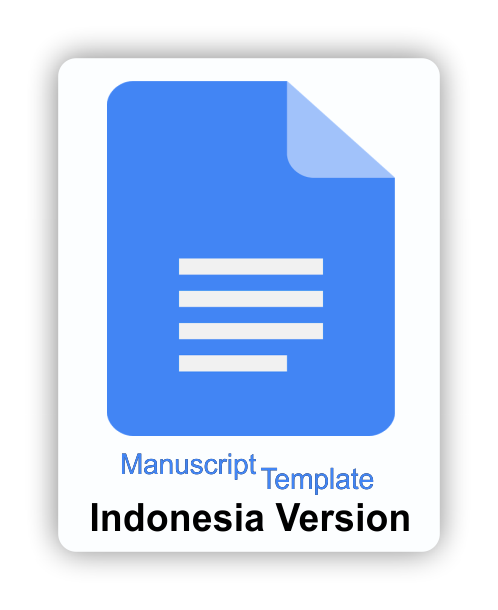Formasi kelompok dinamis untuk mendukung kolaborasi pembelajaran proyek perangkat lunak
Defri Kurniawan, Fakultas Ilmu Komputer, Universitas Dian Nuswantoro, Indonesia
Abstract
Matakuliah proyek perangkat lunak digunakan untuk melatih mahasiswa dalam penguasaan materi pengembangan perangkat lunak yang terdiri dari analisis, desain, implementasi, dan evaluasi. Mahasiswa diajarkan bagaimana cara mengerjakan perangkat lunak dari tahap awal hingga tahap akhir. Selain itu, mahasiswa juga dilatih untuk bekerja secara tim. Permasalahan yang terdapat pada Universitas Dian Nuswantoro adalah pembentukan kelompok masih dilakukan secara random-select. Pembentukan kelompok yang dilakukan mahasiswa berdasarkan unsur pertemanan, satu komunitas, atau grup di social media seperti WhatsApp. Hasilnya, terjadi ketidakseimbangan di dalam kelompok tim proyek. Ketidakseimbangan tim proyek dapat menyebabkan gagalnya proyek pengembangan perangkat lunak. Penelitian ini mengusulkan eksperimen pendekatan dynamic group formation dengan algoritma genetika. Hasil dari eksperimen menunjukkan bahwa algoritma genetika mampu membantu pembentukan kelompok tim proyek dengan tingkat keberhasilan 87.5% dengan pengaturan inisial populasi adalah 100 populasi dan probabilitas crossover adalah 0.6. Tujuan dari penelitian ini adalah memberikan alternatif pembentukan kelompok mahasiswa secara dinamis guna mendukung kolaborasi tim proyek mahasiswa. Pada proyek perangkat lunak kedepan, tidak ada pembentukan tim proyek secara homogen atau pemilihan anggota tim proyek secara self-select atau random-select.
Abstract
Software project courses are used to train students in mastering software development materials consisting of analysis, design, implementation, and evaluation. Students are taught how to work on software from the initial stage to the final stage. In addition, students are also trained to work in teams. The problem in Universitas Dian Nuswantoro is that group formation is still done randomly-selectively. The formation of groups by students is based on the friendship level, a community, or a group on social media such as WhatsApp. As a result, there is an imbalance in the project team. Imbalance of the project team can cause the failure of software development projects. This study proposes an experiment using a dynamic group formation approach with genetic algorithms. The results of the experiment show that the genetic algorithm is able to help the formation of project team groups with a success rate of 87.5% with the initial population is 100 population and the probability of crossover (pc) is 0.6. The objective of this study is to provide an alternative dynamic formation of student groups to support the collaboration of student project teams. In the future, there is no homogeneous project team formation or selection of member teams using a self-select or random-select method.
Keywords
Full Text:
PDFReferences
Amara, S., Macedo, J., Bendella, F., & Santos, A. (2016). Group formation in mobile computer-supported collaborative learning contexts: A systematic literature review. Journal of Educational Technology & Society, 19(2), 258-273. doi:https://doi.org/10.2307/jeductechsoci.19.2.258
Chen, C. H., Chen, Y. H., Lin, J. C. W., & Wu, M. E. (2019). An effective approach for obtaining a group trading strategy portfolio using grouping genetic algorithm. IEEE Access, 7, 7313–7325. doi:https://doi.org/10.1109/ACCESS.2018.2889737
Chen, C. M., & Kuo, C. H. (2019). An optimized group formation scheme to promote collaborative problem-based learning. Computers and Education, 133, 94–115. doi:https://doi.org/10.1016/j.compedu.2019.01.011
Dascalu, M.-I., Dumitrache, A.-M., Coman, M., & Moldoveanu, A. (2015). Group maker tool for software engineering projects. Procedia-Social and Behavioral Sciences, 203, 102–108. doi:https://doi.org/10.1016/j.sbspro.2015.08.266
Fahmi, F. Z., & Nurjanah, D. (2018). Group formation using multi objectives ant colony system for collaborative learning. Proceeding of the Electrical Engineering Computer Science and Informatics, 5(1), 696-702. doi:https://doi.org/10.11591/eecsi.v5.1711
Farissi, A., & Dahlan, H. M. (2019, September). Genetic algorithm-based feature selection for predicting student’s academic performance. Paper presented at International Conference of Reliable Information and Communication Technology, Johor, Malaysia. doi:https://doi.org/10.1007/978-3-030-33582-3_11
Garshasbi, S., Mohammadi, Y., Graf, S., Garshasbi, S., & Shen, J. (2019). Optimal learning group formation: A multi-objective heuristic search strategy for enhancing inter-group homogeneity and intra-group heterogeneity. Expert Systems with Applications, 118, 506–521. doi:https://doi.org/10.1016/j.eswa.2018.10.034
Krouska, A., Troussas, C., & Virvou, M. (2020). Applying genetic algorithms for student grouping in collaborative learning: A synthetic literature review. Intelligent Decision Technologies, 13(4), 395-406. doi:https://doi.org/10.3233/idt-190184
Lambora, A., Gupta, K., & Chopra, K. (2019, February). Genetic algorithm-A literature review. Paper presented at 2019 International Conference on Machine Learning, Big Data, Cloud and Parallel Computing (COMITCon) (pp. 380-384), Faridabad, India.
Largent, D. L. (2016). Measuring and understanding team development by capturing self-assessed enthusiasm and skill levels. ACM Transactions on Computing Education, 16(2), 1–27. doi:https://doi.org/10.1145/2791394
Noguera, I., Guerrero-Roldán, A. E., & Masó, R. (2018). Collaborative agile learning in online environments: Strategies for improving team regulation and project management. Computers and Education, 116, 110–129. doi:https://doi.org/10.1016/j.compedu.2017.09.008
Pedersen, J. M., Kuran, S., Frick, J., & Mank, L. (2016). Colibri: An international blended learning experience based on real-world problems. Paper presented at 8th International Symposium on Project Approaches in Engineering EducationInternational Symposium on Project Approaches in Engineering Education (pp. 259-268), University of Minho.
Rahman, H., Roy, S. B., Thirumuruganathan, S., Amer-Yahia, S., & Das, G. (2019). Optimized group formation for solving collaborative tasks. VLDB Journal, 28(1), 1-23. Doi:https://doi.org/10.1007/s00778-018-0516-7
Rahmawati, R. N., & Narsa, I. M. (2019). Penggunaan e-learning dengan Technology Acceptance Model (TAM). Jurnal Inovasi Teknologi Pendidikan, 6(2), 127–136. doi:https://doi.org/10.21831/jitp.v6i2.26232
Shih, T. K., Gunarathne, W. K. T. M., Ochirbat, A., & Su, H. M. (2018). Grouping peers based on complementary degree and social relationship using genetic algorithm. ACM Transactions on Internet Technology, 19(1), 1-29. https://doi.org/10.1145/3193180
Shukla, A. K., Pippal, S. K., & Chauhan, S. S. (2019). An empirical evaluation of teaching–learning-based optimization, genetic algorithm, and particle swarm optimization. International Journal of Computers and Applications, 1-15. doi:https://doi.org/10.1080/1206212X.2019.1686562
Tseng, H. E. J. J. (2016). Blended versus traditional course delivery: Comparing students’ motivation, learning outcomes, and preferences. Quarterly Review of Distance Education, 17(1), 43–52.
Utomo, D. W., Kurniawan, D., & Sani, R. R. (2020). Pemodelan Algoritma Genetika dalam Pengelompokan Siswa Pada Kolaborasi. Seminar Nasional Dinamika Informatika 2020 Universitas PGRI Yogyakarta, 148–152.
Utomo, D. W., Subhiyakto, E. R., & Ahmad, S. (2015). Tool Enhancement For Collaborative Software Engineering Education. Seminar Nasional Teknologi Informasi dan Komunikasi 2015 (SENTIKA 2015), 9-16.
Vivian, R., Tarmazdi, H., Falkner, K., Falkner, N., & Szabo, C. (2015). The development of a dashboard tool for visualizing online teamwork discussions. 2015 IEEE/ACM 37th IEEE International Conference on Software Engineering, 2, 380-388. doi:https://doi.org/10.1109/ICSE.2015.170
Wijaya, M. M. J., Utomo, D. W., & Kurniawan, D. (2019, December). Implementing dynamic group formation in web-based collaborative learning for high school. Paper presented at 2019 International Seminar on Research of Information Technology and Intelligent Systems (ISRITI), Yogyakarta, Indonesia. doi:https://doi.org/10.1109/ISRITI48646.2019.9034625
Wilson, K. J., Brickman, P., & Brame, C. J. (2018). Group work. CBE Life Sciences Education, 17(1), 1–5. doi:https://doi.org/10.1187/cbe.17-12-0258
Wu, J. (2019, July). Online collaborative learning of a mixed team: A case study of hotel and tourism students from varied education backgrounds. Paper presented at 3rd International Conference on Education and Multimedia Technology, Nagoya, Japan. doi:https://doi.org/10.1145/3345120.3345137
Yamagata-Lynch, L. C. (2014). Blending online asynchronous and synchronous learning. International Review of Research in Open and Distributed Learning, 15(2), 189-212. doi:https://doi.org/10.19173/irrodl.v15i2.1778
Yunis, R., & Telaumbanua, K. (2017). Pengembangan E-Learning Berbasiskan LMS untuk Sekolah, Studi Kasus SMA/SMK di Sumatera Utara. Jurnal Nasional Teknik Elektro dan Teknologi Informasi (JNTETI), 6(1), 32-36.
Zheng, Z., & Pinkwart, N. (2014). Dynamic re-composition of learning groups using PSO- based algorithms. Proceedings of the 7th International Conference on Educational Data Mining, 3, 357–358.
DOI: https://doi.org/10.21831/jitp.v7i1.31378
Refbacks
- There are currently no refbacks.
Copyright (c) 2020 Danang Wahyu Utomo, Defri Kurniawan

This work is licensed under a Creative Commons Attribution-ShareAlike 4.0 International License.
Our journal indexed by:
View Journal Statistics

















.png)